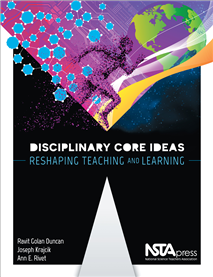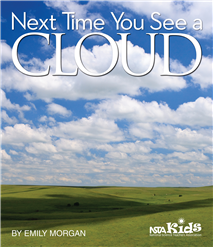All Book Chapters
Book Chapter
This lesson helps students: develop and use a model to explain the inheritance of traits; predict the frequency of genotypes and phenotypes in a cross; recognize that each parent contributes equally to the genotype even when the recessive trait is no...
Book Chapter
Seriously …That’s Where the Mass of a Tree Comes From?
This lesson helps students identify photosynthesis as the process through which plants make glucose, determine that most of the mass of a plant comes from carbon dioxide, explain that plants use glucose for energy and raw materials for plant growth a...
Book Chapter
Chemistry, Toys, and Accidental Inventions
This lesson helps students distinguish between reactants and products, explain the law of conservation of matter, measure properties or reactants and products, recognize that a change in the reactants results in a difference in the products, observe ...
Book Chapter
Nature’s Light Show: It’s Magnetic!
This lesson helps students draw and describe Earth’s magnetic field, explain the phenomenon of the aurora, summarize a text, including the central ideas and supporting details, and synthesize information gained from investigations and text. The inv...
Book Chapter
Thermal Energy: An Ice Cube’s Kryptonite!
This lesson helps students recognize that different materials have different thermal properties, distinguish between qualitative and quantitative measurements of temperature, illustrate that thermal energy moves from areas of high heat to areas of lo...
Book Chapter
This lesson helps students to recognize that interventions can slow or stop the negative impact of human activities on the environment, identify strategies for reusing natural resources, investigate ways to reduce municipal solid waste, draw conclusi...
Book Chapter
This lesson helps students to develop and use a model of the Sun–Earth system to explain: the relationship between the amount of sunlight and the season; the relationship between the angle of incidence of sunlight and the season; and the reason the...
Book Chapter
This lesson helps students explain that Earth’s history is broken up into smaller time periods and rocks and fossils provide evidence for these time periods. Students synthesize information gathered through investigations and text. The investigatio...
Book Chapter
This lesson helps students recognize that secondhand evidence can be used to answer scientific questions, describe how organisms change over time in response to environmental pressures, compare anatomical differences between modern and ancestral orga...
Book Chapter
Core Idea PS4: Waves and Their Applications in Technologies for Information Transfer
Like all enthusiastic teachers, you want your students to see the connections between important science concepts so they can grasp how the world works now—and maybe even make it work better in the future. But how exactly do you help them learn and ...
Book Chapter
Great news for multitasking middle school teachers: Science educators Terry Shiverdecker and Jessica Fries-Gaither can help you blend inquiry-based science and literacy instruction to support student learning and maximize your time. Several unique fe...
Book Chapter
Next Time You See a Cloud (Sample)
Next time you want to see a show, go outside and look at the sky. The clouds will put on a show for you with their ever-changing shapes and sizes. This book reveals some fascinating science behind these beautiful displays. Author Emily Morgan answers...
Book Chapter
UV or not UV? That Is a Question for Your Sunglasses
What makes a windup toy get up and go? How does an earbud operate? And why does the line you’re waiting in always seem the slowest? Get middle-schoolers engaged in the fascinating science behind familiar items with More Everyday Engineering. Like E...







